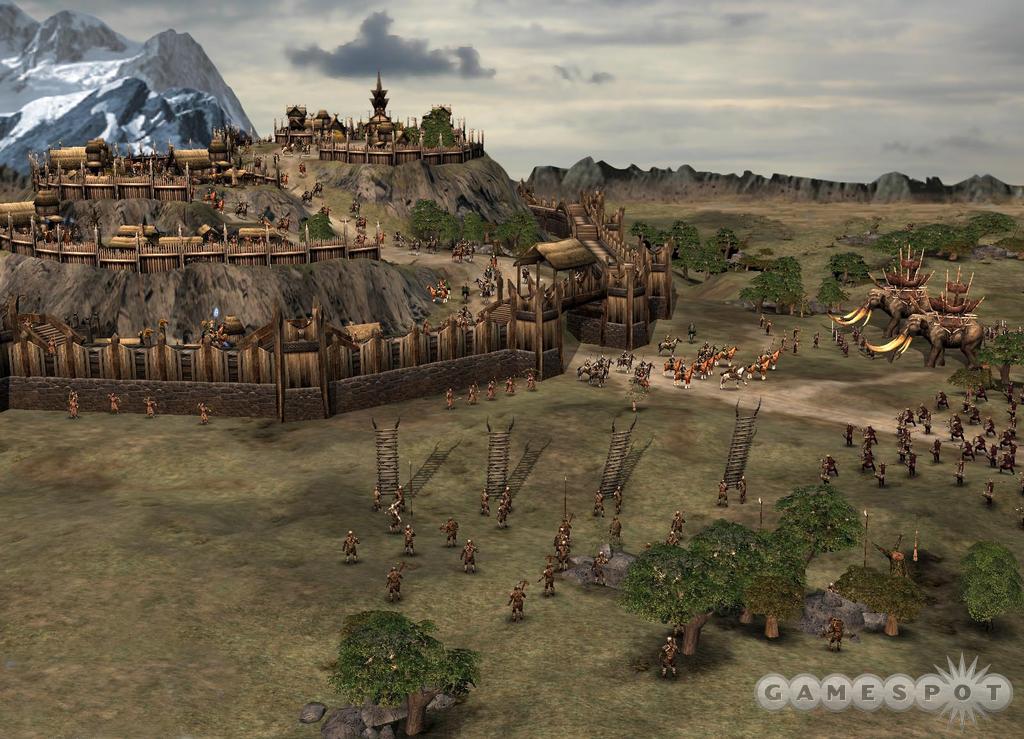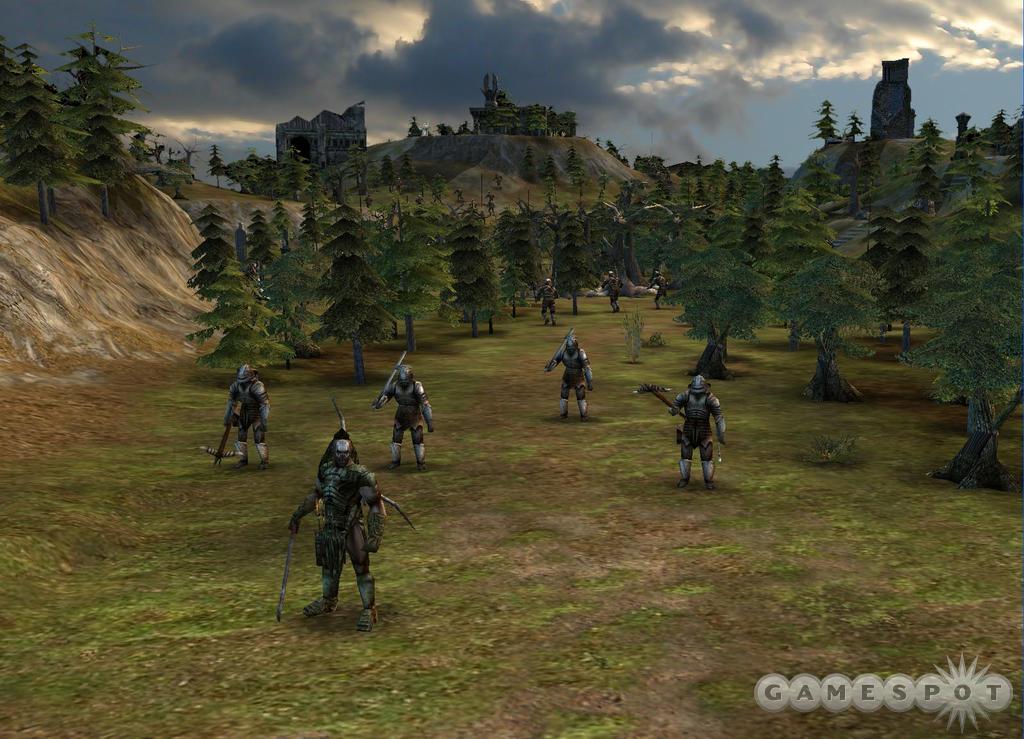The Lord of the Rings, The Battle for Middle-earth Designer Diary #5
Design director Dustin Browder explains how the game is designed to allow you to focus more on strategy and less on micromanagement.
You may have read the novels, and you've probably seen the movies, but if you're a fan of The Lord of the Rings, can you say what kind of resources are in J.R.R. Tolkien's universe? That's one of the many questions that fell on Dustin Browder, the design director for EA's upcoming real-time strategy game The Lord of the Rings, The Battle for Middle-earth. In essence, Browder's job was to figure out how to translate The Lord of the Rings movies into a real-time strategy game. In The Battle for Middle-earth, you will have the opportunity to command the armies of both good and evil as you attempt to conquer the world. As with most real-time strategy games, The Battle for Middle-earth will require you to gather resources, construct buildings, and assemble massive armies. The reward will be when gigantic armies clash on the field of battle, in beautiful and stunning 3D. In this edition of our designer diaries, Browder describes how the game is designed to allow you to focus more on strategy and less on managing units.
Mechanics of Middle-earth
By Dustin BrowderDesign director, EA LA
I started work on The Lord of the Rings, The Battle for Middle-earth by doing a lot of concept work. I prepared design documentation and determined things like what our economy system would be like, what our combat model would be, and what kinds of units and structures would be available. In short, the hardcore gameplay mechanics for the game. These days I spend a lot of my time evolving the game design as we go forward in production.

The team has done a lot of work on The Battle for Middle-earth to make the gameplay mechanics more accessible. By making the interface easier, by making units get into their own formations without a lot of management from the player, by making resource management easier, we hope that players will have more time to concentrate on their strategies for their heroes, their armies, and their fortresses.
With the vast armies that you see in the films, we found that controlling a large force of orcs was a real challenge and caused players to focus too much on micromanaging individual units and not enough on their strategies. To fix this, we put many units in "battalions," where a single click gives you control of five or more soldiers. The battalion moves as a group, fights as a group, and even gains veterancy as a group. It also gave us a great chance to add tons of cool powers to the units, because now each battalion can change formations, and each formation can have its own strengths and weaknesses.
Imagine a group of Gondor soldiers desperately defending the gate of Minas Tirith. The gate is destroyed and orcs are trying to pour into the city. Our little band of soldiers ordinarily fights well, but against 200 orcs, they are badly outclassed. However, with this battalion, I can order them to form a shield-wall formation. The soldiers tighten formation, lock their shields together, and get perhaps a 50-percent armor bonus. Now, they may hold out long enough for me to bring Gandalf to the gate. You could also take that same group of soldiers and combine them with a group of archers to create a special formation where the soldiers surround the archers and protect them from enemy attacks while the archers shoot at all approaching enemies. We really feel that the battalions make the units easy to control and offer more strategy than we have ever had before with individual units.

Of course, we still have some individuals like the mountain trolls, or heroes like Gandalf, or the Witch-king. These guys offer lots of options for strategy with a long list of exotic powers, including spells and special bonuses for leading troops into battle. So it's not just about formations and mass-troop movements, but it's also about the heroic efforts of a few individuals that will turn the tide of battle.
Working on The Battle for Middle-earth has been a dream come true for me. I'm a big fan of the fiction and the movies. I've always wanted to get inside of Middle-earth and play with the characters and make the events happen. And working on this project has given me that chance.
Got a news tip or want to contact us directly? Email news@gamespot.com
Join the conversation